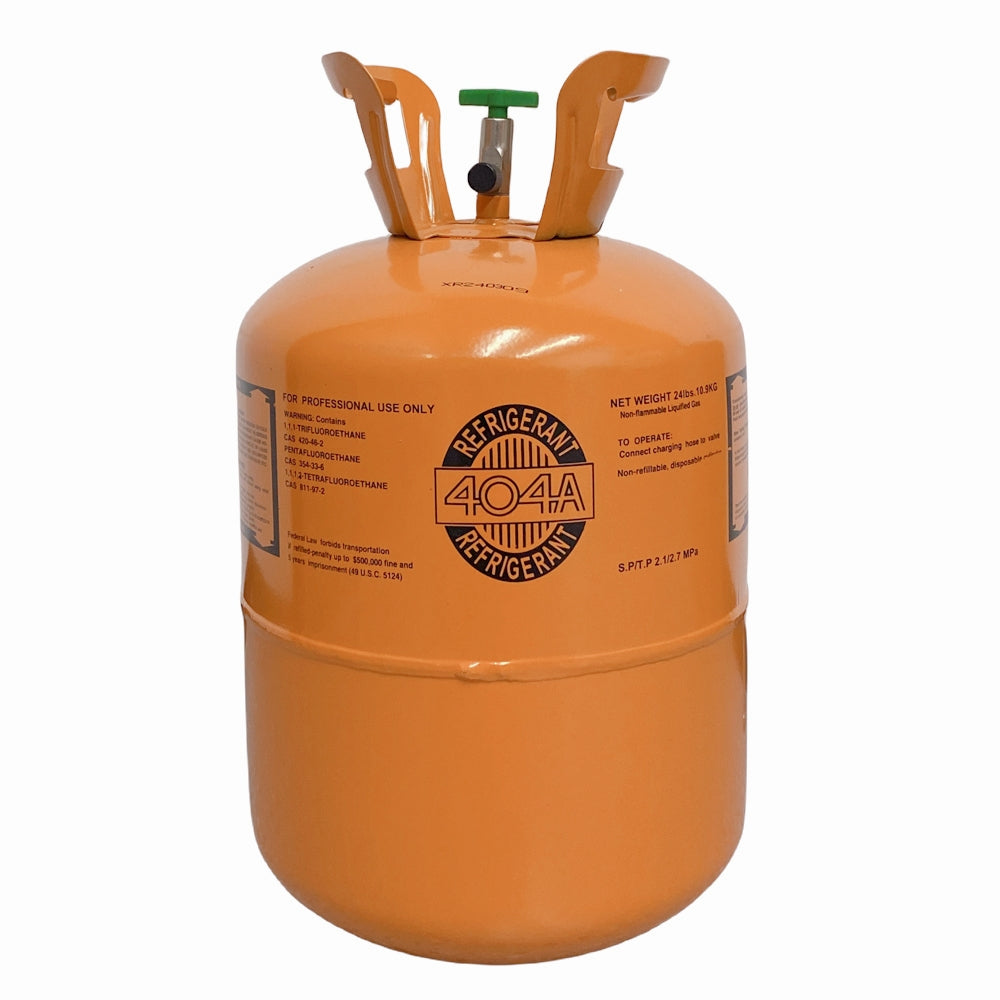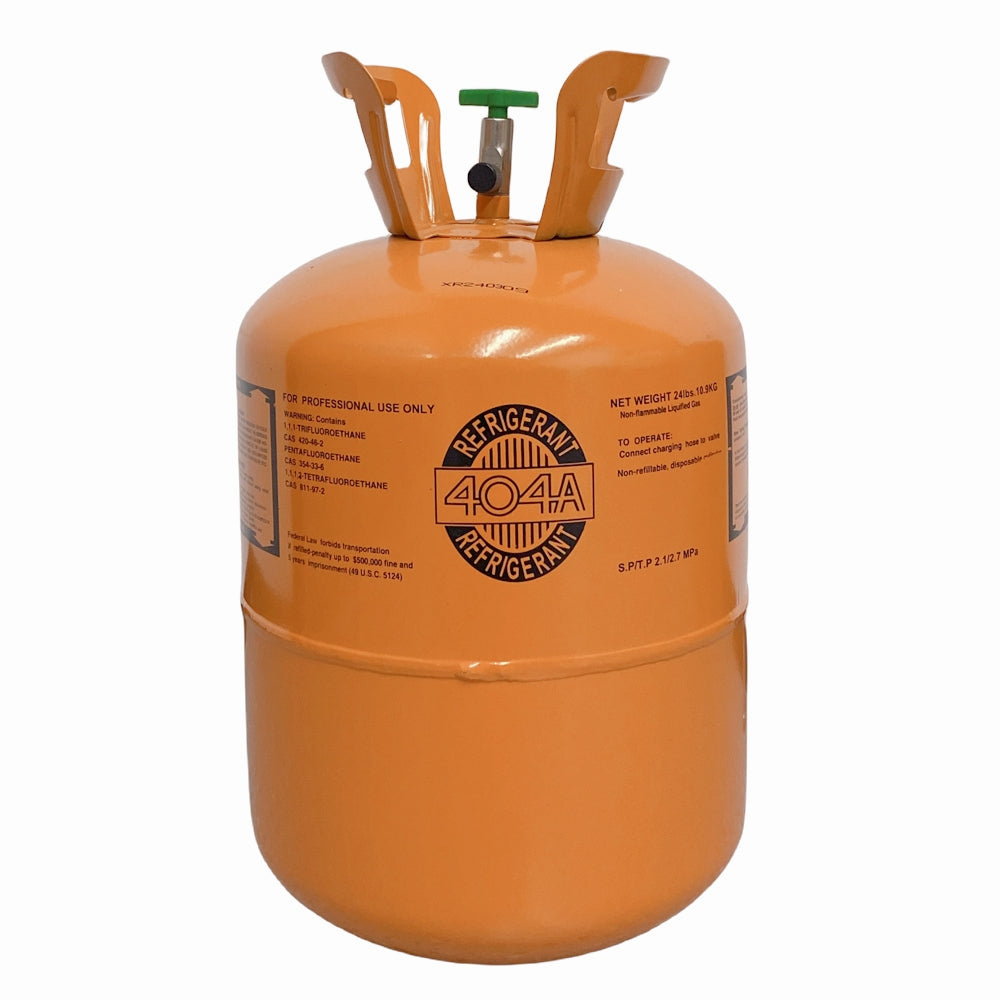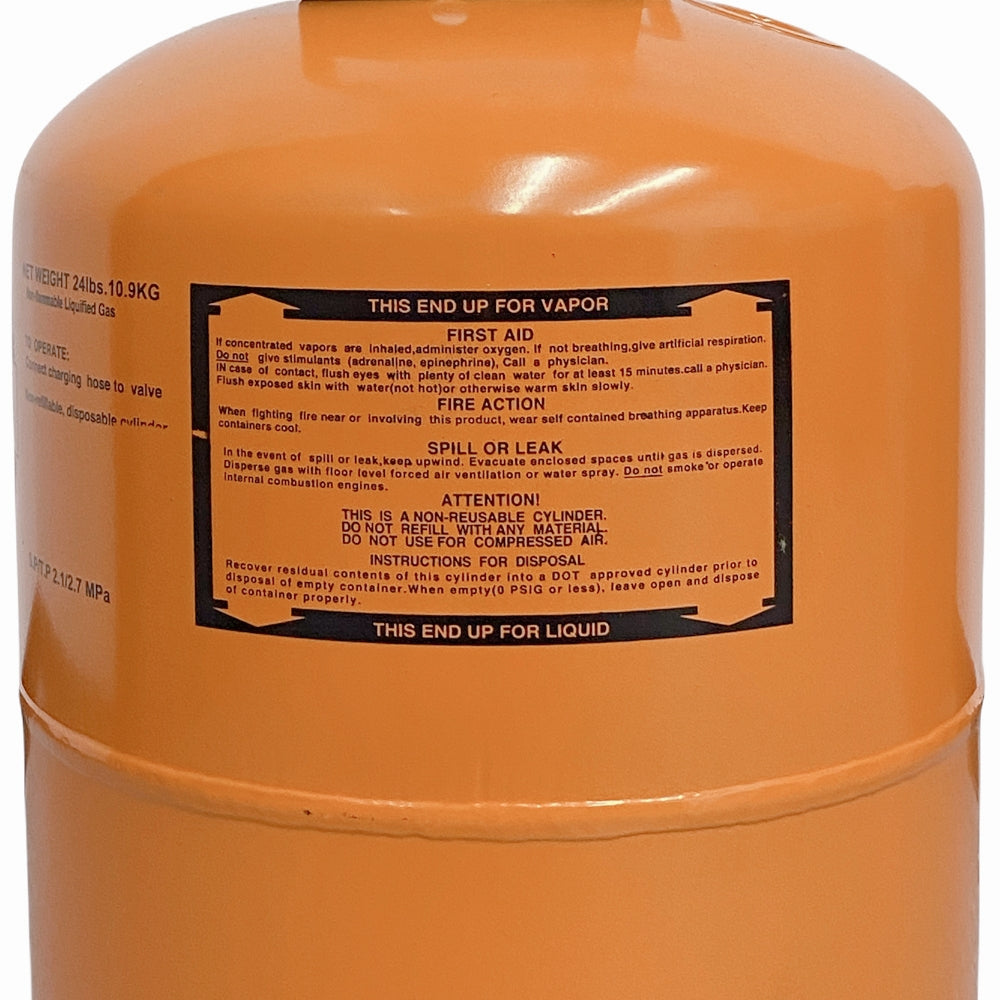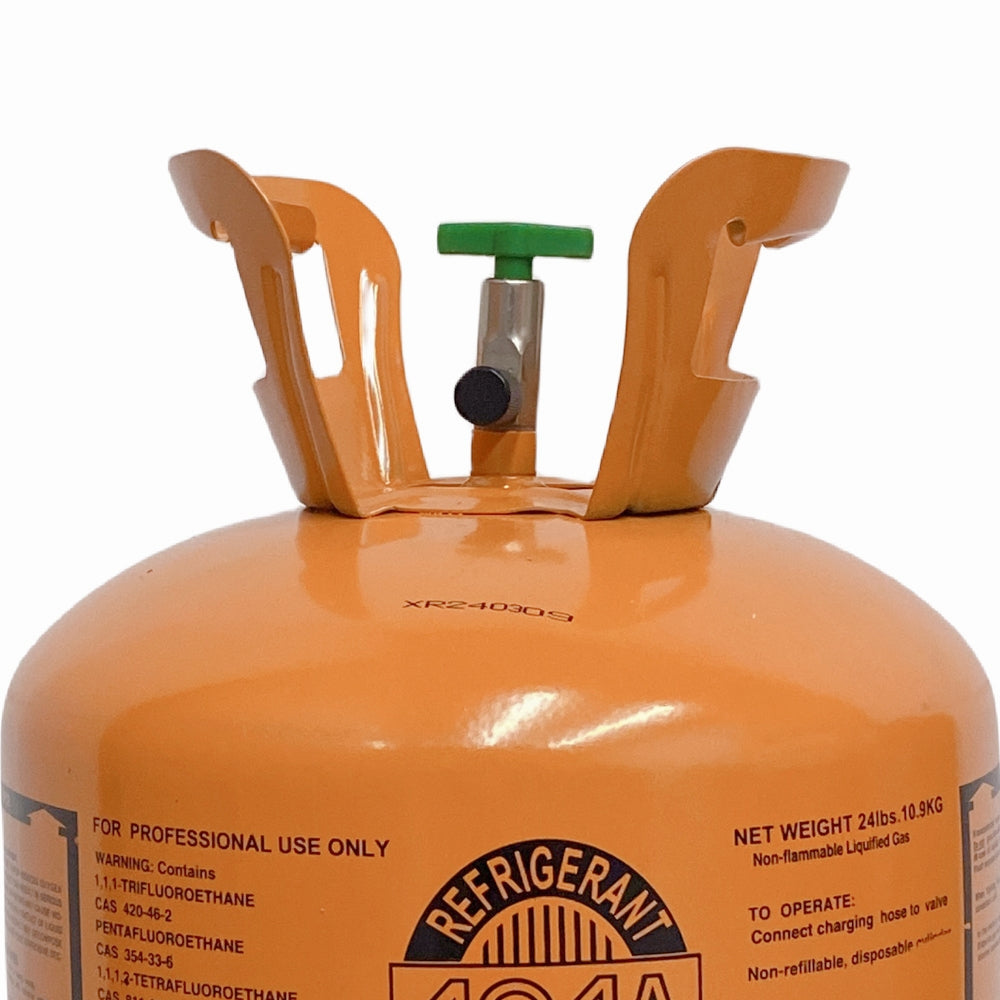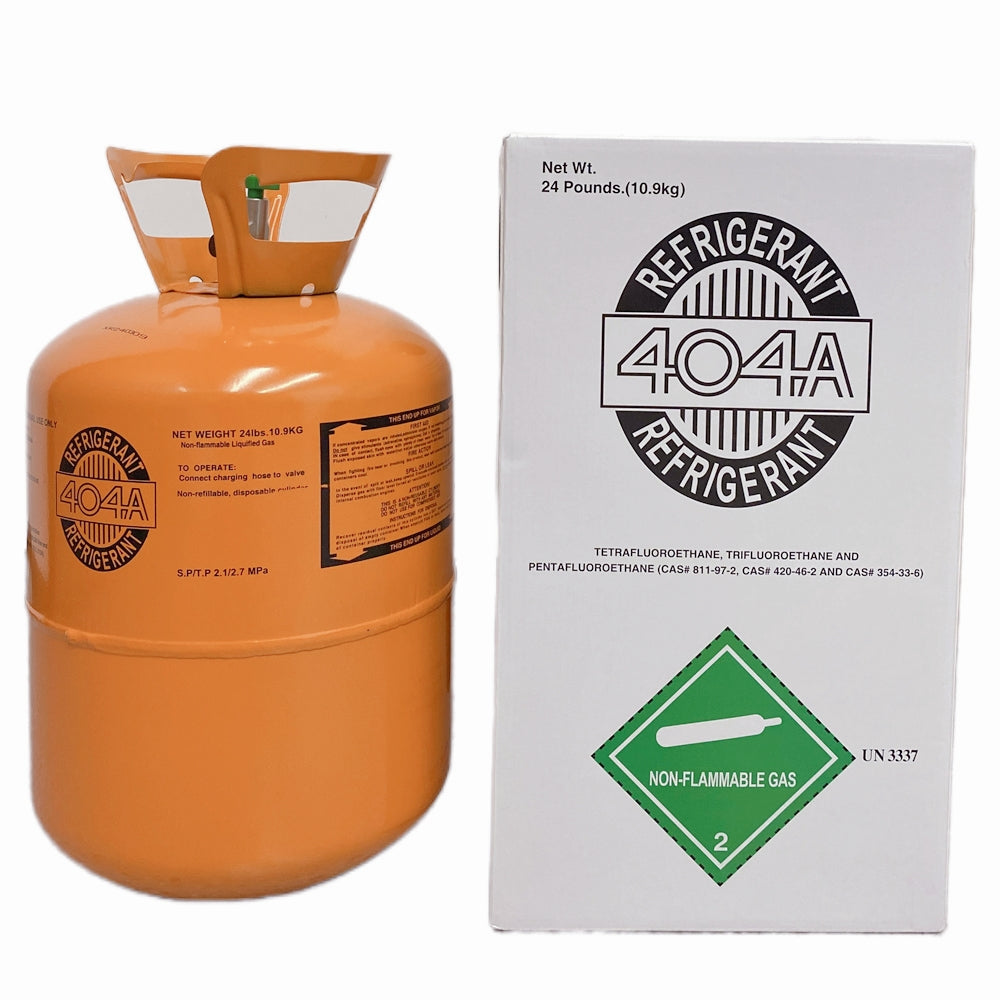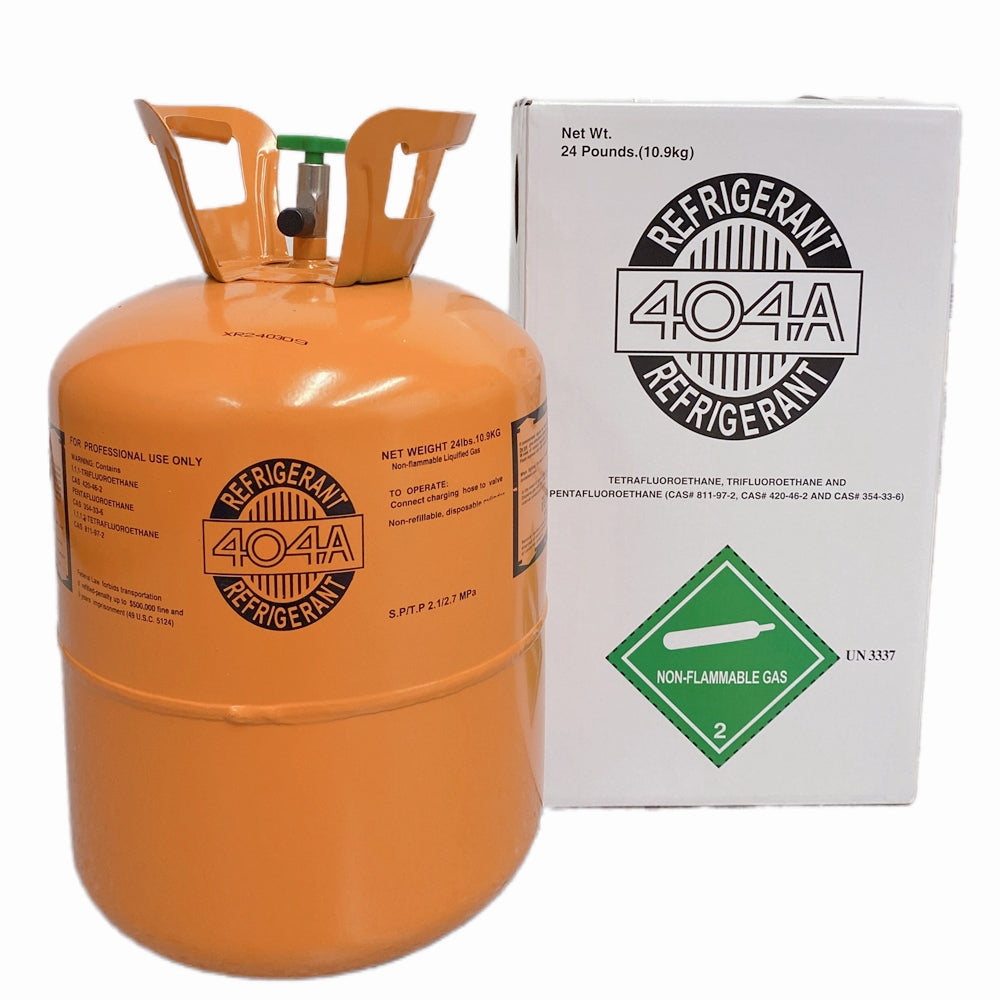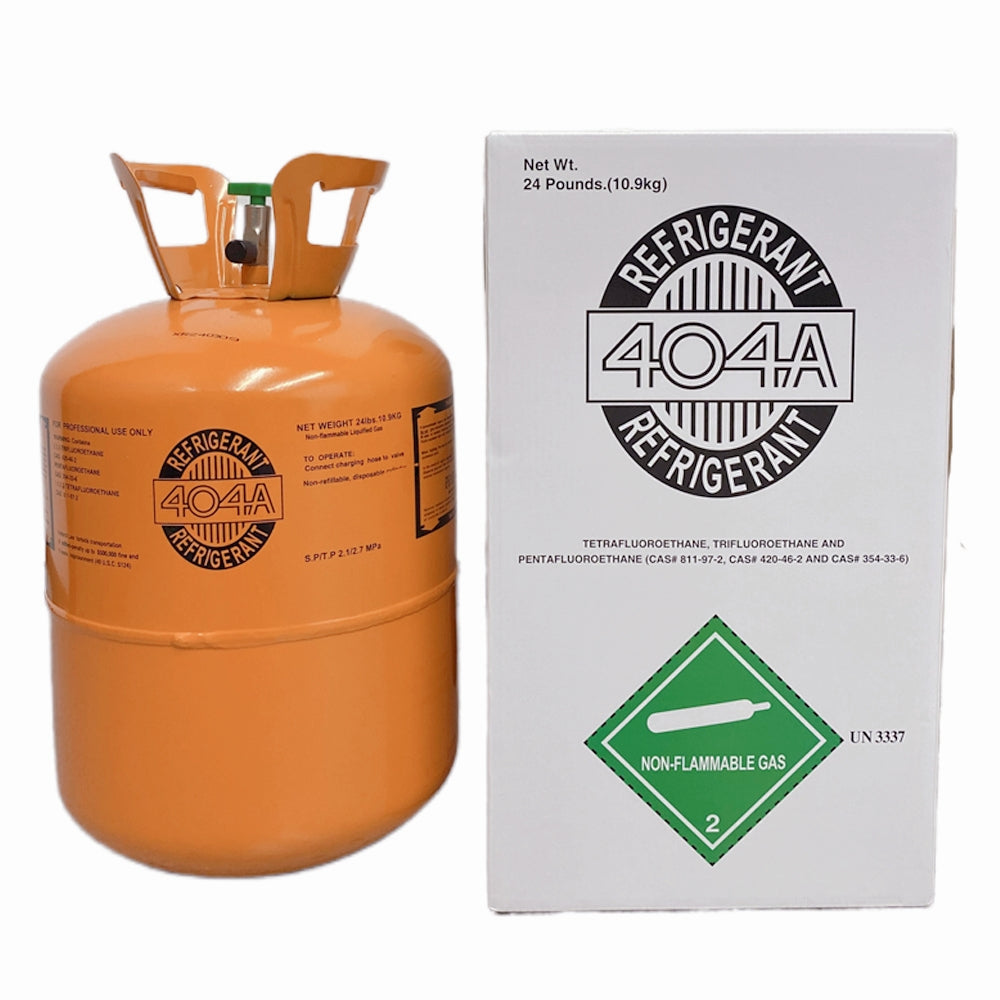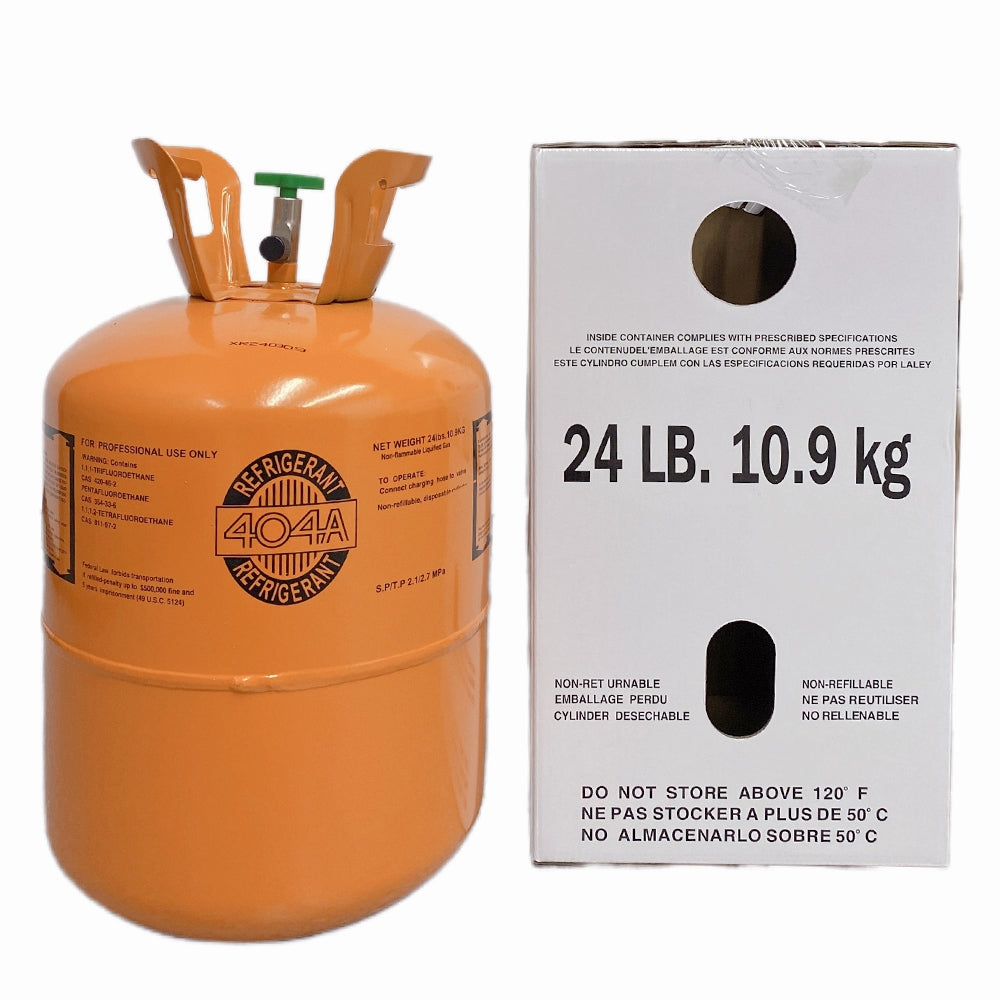Introduction: Why R-404A Has Been an Industry Standard
R-404A has long been the go-to refrigerant for commercial refrigeration systems, especially in supermarkets, cold storage facilities, and transport refrigeration. Originally developed as a non-ozone-depleting replacement for CFCs and HCFCs like R-502, R-404A provides strong performance and reliability. But with changing environmental regulations, how does it hold up today?
In this guide, we’ll explore:
✔ Chemical composition & environmental impact
✔ Benefits and limitations
✔ Key application areas
✔ Compatibility, servicing, and safety
✔ Future alternatives & phaseout timeline
1. What Is R-404A? (Composition & Environmental Impact)
A. Chemical Makeup
R-404A is a zeotropic blend of three HFC (Hydrofluorocarbon) refrigerants:
· 44% R-125 (Pentafluoroethane) – stability and fire safety
· 52% R-143a (Trifluoropropane) – primary cooling capacity
· 4% R-134a (1,1,1,2-Tetrafluoroethane) – balances pressure & efficiency
This blend results in high cooling performance, but also requires glide management during heat exchange.
B. Environmental Impact
· Ozone Depletion Potential (ODP): 0 (Good)
· Global Warming Potential (GWP): 3,922 (Very High)
Because of its extremely high GWP, R-404A is now subject to global phase-down initiatives like the Kigali Amendment and EU F-Gas Regulation.
Key Takeaway:
✅ Ozone-safe (ODP = 0)
⚠ Extremely high GWP (3,922) – Future bans/phaseouts expected
2. Performance and Applications
A. Ideal Use Cases
R-404A is widely used in:
· Supermarket refrigeration systems
· Cold storage warehouses
· Refrigerated trucks and trailers
· Ice machines and process cooling
Its low-temperature capability and consistent reliability have made it a top choice for decades.
B. Key Performance Traits
· Stable performance in extreme cold conditions
· Non-flammable and compatible with standard safety protocols
· Well-supported globally, with trained technicians and spare parts widely available
3. Comparison: R-404A vs. Alternatives
|
Feature |
R-404A |
R-448A |
R-449A |
R-290 (Propane) |
|
GWP |
3,922 |
~1,400 |
~1,400 |
3 |
|
Flammability |
Non-flammable |
Non-flammable |
Non-flammable |
Highly flammable |
|
Efficiency (vs. R-404A) |
Baseline |
5–8% better |
5–8% better |
15–20% better |
|
Drop-in replacement |
No |
Partial |
Partial |
No |
Takeaway:
✔ R-448A and R-449A are often used as retrofits
✔ R-290 offers excellent efficiency but comes with safety and regulatory hurdles
4. System Requirements & Compatibility
R-404A systems are pressure-rated and optimized for medium to low-temperature applications. Some important notes:
· Lubricant: Requires POE (Polyolester) oil – not compatible with mineral oil
· Operating Pressure: ~250–300 psi for evaporator / ~350–400 psi for condenser
· Servicing Tips:
Never mix with R-22 or incompatible blends
Charge as liquid (not vapor) to maintain composition
Use appropriate recovery and leak detection tools
5. Future of R-404A: Is Phaseout Coming?
Yes—regulations are pushing to limit or ban R-404A due to its high GWP. Already, several regions have enacted restrictions:
Timeline:
· 2025+ – Bans in new equipment in EU, California, and Canada
· 2030+ – Expected global phaseout in favor of low-GWP alternatives
· Retrofit and reclaim options remain available for existing systems, but becoming more limited
Final Verdict: Is R-404A Still Viable?
✅ Still effective for existing systems, widely supported
⚠ Not recommended for new installations due to regulatory pressure
Recommendation:
• If you’re servicing an existing R-404A system, continue using reclaimed refrigerant where allowed
• For new installations, consider R-448A, R-449A, or even R-290 if safety regulations can be met
• Always verify local refrigerant laws before planning large-scale installations
FAQs about R-404A Refrigerant
Q: Can I still buy and use R-404A in 2025?
Yes, but availability may be limited to reclaimed or stockpiled supplies in many regions.
Q: Can I retrofit R-404A systems to new refrigerants?
In most cases, yes. R-448A and R-449A are the most common retrofit options, but oil changes and minor component updates may be needed.
Q: Why is R-404A being phased out?
Because of its very high GWP. Even though it has no ozone impact, its contribution to climate change is considered significant.


